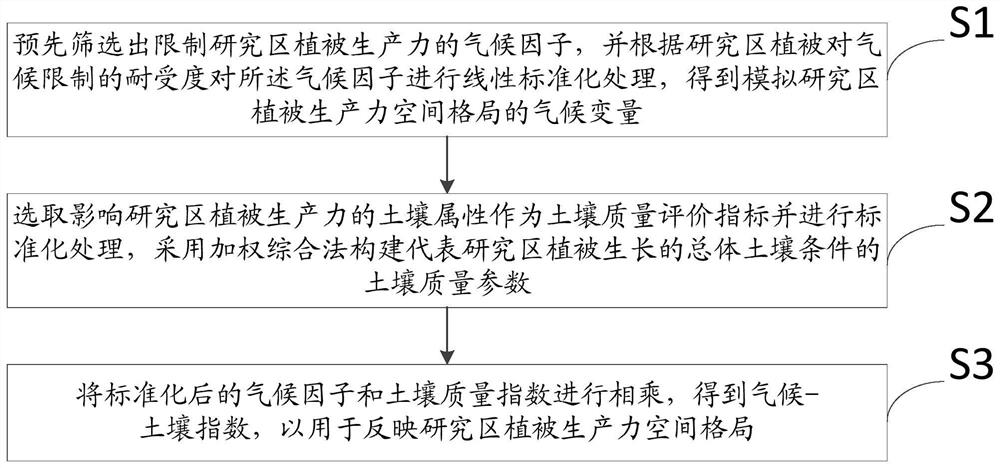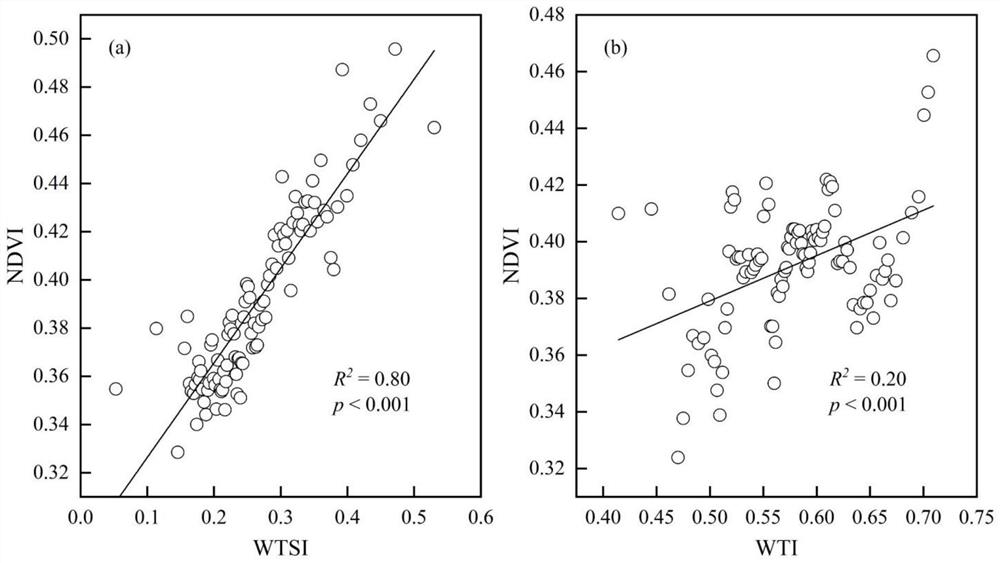Method and system for simulating vegetation productivity spatial pattern based on climate and soil
A technology of spatial pattern and productivity, applied in the field of geospatial space, can solve the problems that the vegetation productivity model does not consider soil factors, has many input variables, and complex calculations, and achieves the effect of strong applicability, comprehensive consideration, and high degree of interpretation
- Summary
- Abstract
- Description
- Claims
- Application Information
AI Technical Summary
Problems solved by technology
Method used
Image
Examples
no. 1 example
[0046] see Figure 1-3 .
[0047] like figure 1As shown, this embodiment provides a method for simulating the spatial pattern of vegetation productivity based on climate and soil, at least including the following steps:
[0048] S1. Pre-screen the climatic factors that limit the vegetation productivity in the study area, and perform linear standardization on the climatic factors according to the tolerance of the vegetation in the study area to the climatic restrictions, and obtain the climate variables that simulate the spatial pattern of vegetation productivity in the study area.
[0049] Specifically, for step S1, the climatic factors that limit vegetation productivity (usually including precipitation, temperature, and solar radiation) are screened, and the climatic factors are linearly standardized according to the tolerance of vegetation to climatic constraints to obtain the climate that simulates the spatial pattern of vegetation productivity. variable.
[0050] S2. Se...
no. 2 example
[0135] see Figure 4 .
[0136] like Figure 4As shown, the present embodiment provides a system for simulating the spatial pattern of vegetation productivity based on climate and soil, including:
[0137] The climatic variable module 100 is used to pre-screen out the climatic factors that limit the vegetation productivity in the research area, and perform linear standardization on the climatic factors according to the tolerance of the vegetation in the research area to climate restrictions, so as to obtain the spatial pattern of vegetation productivity in the simulated research area. climate variable.
[0138] Specifically, for the climate variable module 100, the climatic factors (usually including precipitation, air temperature and solar radiation) that limit vegetation productivity are screened, and the climatic factors are linearly standardized according to the tolerance of vegetation to climatic constraints to obtain the spatial pattern of simulated vegetation producti...
PUM
 Login to View More
Login to View More Abstract
Description
Claims
Application Information
 Login to View More
Login to View More - R&D
- Intellectual Property
- Life Sciences
- Materials
- Tech Scout
- Unparalleled Data Quality
- Higher Quality Content
- 60% Fewer Hallucinations
Browse by: Latest US Patents, China's latest patents, Technical Efficacy Thesaurus, Application Domain, Technology Topic, Popular Technical Reports.
© 2025 PatSnap. All rights reserved.Legal|Privacy policy|Modern Slavery Act Transparency Statement|Sitemap|About US| Contact US: help@patsnap.com



